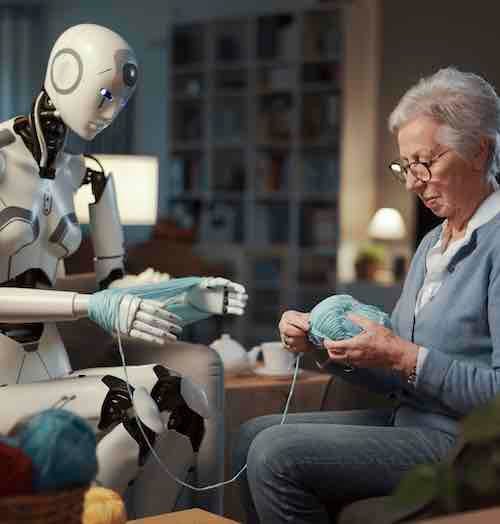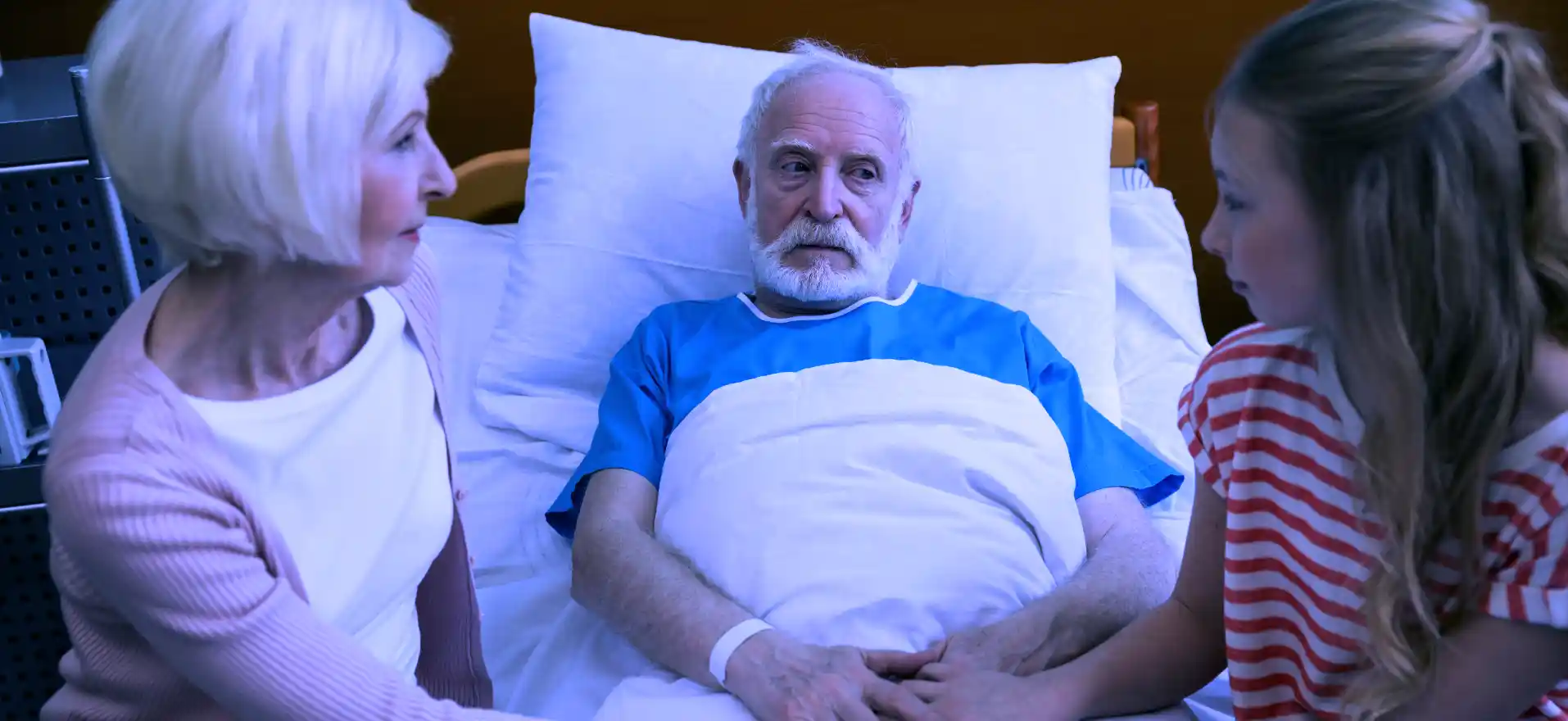Standing on the Brink: The Future of Senior Living

Standing on the brink of transformative change, the senior living industry is currently influenced by a multitude of factors. These include changes in Medicare reimbursements, demographic shifts, staffing shortages, a dwindling number of geriatric specialists, technological advancements, and a rising tide of increasingly severe lawsuits. I recently had the opportunity to experience this transition firsthand, through the journey of my father’s palliative care and eventual passing. This deeply personal experience left me questioning the future. Will there be sufficient options and resources to ensure that my last days are filled with comfort and dignity? I wonder whether I can avoid burdening my children with the responsibility of upending their lives to provide me with the necessary care.
The senior living industry is arguably in the early stages of a paradigm shift. These changes could dehumanize the care system for our final years, or they could allow us enjoy those years with dignity. It depends on how we, the stakeholders shape this industry.
Here’s what is driving that change:
The Demographic Shift and Staffing Shortage
The growing number of seniors is a global phenomenon, with the population aged 65 and over projected to double by 2050. This demographic shift is expected to increase demand for senior living facilities. However, the sector is grappling with a significant challenge – a shortage of physicians and nursing staff, beds and infrastructure.
As the baby boomer generation of healthcare workers retires, there’s a growing concern about the vacancies they leave behind in the healthcare industry. A recent survey by Elsevier Health found that by 2025, up to 75% of healthcare workers will leave the profession. The Association of American Medical Colleges (AAMC) conducted a study in 2020, which projected a shortfall of up to 139,000 physicians by 2033.
But it gets worse. For years now, fewer medical students have been choosing to specialize in geriatrics. There are currently around 7,300 geriatricians in the U.S., with 55 million seniors. Research shows that 30 percent of people 65 years old and older need care from a geriatrician which means that each geriatrician takes care of an average of 2,300 patients. The American Geriatrics Society estimates that one geriatrician can care for just 700 patients.
By 2025, there will be an estimated 73 million US seniors, with almost 22 million needing geriatric care. We would need 31,285 geriatricians to provide quality care for these people. We will probably have less than 7,000.
The main reason medical students are shunning geriatrics is believed to be compensation. The average U.S. physician in geriatrics earns just $209,185, while cardiologists and radiologists can earn over $500,000. This is perhaps a reflection on the importance that society places on health care for our seniors.
With fewer professionals to provide care, the staff-to-resident ratio in senior living facilities can only decrease, with a potential impact on the quality of care and the facilities’ medicare ratings. Unless AI can be incorporated to fill the gap.
Rating systems and regulations will also need to evolve to ensure they accurately reflect the quality of care delivered in this new environment, taking into account the changes in staff numbers and the integration of AI and robotics.
The AI and Robotics Revolution
The potential of AI and robotics to bridge the gap in healthcare staffing is being increasingly explored. Advanced AI systems can monitor patient health, manage medication, and even provide companionship. Simultaneously, robots can assist with tasks like lifting residents, cleaning, and meal preparation.
Adapting AI and robotics can alleviate the staff shortage problem, potentially improving the quality of care. Importantly, these technologies also have the potential to enhance privacy, a key concern for many residents.

AI systems can be developed to learn about individual residents, their preferences, tastes, and daily routines. The system can manifest as a friendly voice assistant, in the way that Amazon’s Alexa or Google Home does, but specialized for senior care.
The AI could for instance, greet the resident each morning, know their favorite music or news program, remind them about their medication schedule, or even engage them in stimulating conversation. It can also anticipate and respond to the resident’s needs, such as ordering food based on their preferences or scheduling appointments with healthcare providers.
In terms of safety, the AI system could incorporate sensors and predictive analytics to monitor the resident’s movements, warning them about potential hazards that might be in their way. For example, if a resident is about to get out of bed, the AI system could alert them about an obstacles that was left in their path by a visitor, preventing falls or accidents. This predictive capability can also be extended to health monitoring, enabling early detection of potential health problems.
However, the integration of AI and robotics in senior care is not without challenges. It raises questions about the quality of care, human touch, and ethical considerations, like informed consent for AI-based care and the potential misuse of personal data.
The Legal Implications and Insurance Landscape
The incorporation of AI and robotics in senior care also presents a complex legal and insurance landscape. For instance, in the event of malpractice or accidents, the question of liability becomes challenging. Is it the facility, the AI manufacturer, or the software developer that should be held responsible?
General Liability and Professional Liability insurance may need to evolve to address these challenges. There may be an overlap with Cyber Liability Insurance, which continues to evolve as insurers discover the full extent of the impact of cyber attacks. The connection of medical devices to the Internet of Things (IoT), introduces a whole new dimension of cyber liability.
But can these policies be adapted to cover software malfunctions that result in the death or injury of a patient? In reality, a separate Technical Liability product will probably be needed, to cover the liability of AI programmers and software developers If an AI system fails and causes harm. This will expand the Errors and Omissions (E&O) package from PL/GL to PL/GL/CL/TL.
It will potentially make the job of the commercial agent more challenging and litigation more complicated and costly to defend.
How do we adapt?
The future of senior living facilities is multifaceted and complex. It will require a delicate balance of human and AI-powered care, a forward-thinking legal perspective, and innovative insurance solutions. Stakeholders, including facility operators, policy-makers, tech developers, healthcare professionals, and insurance professionals, will need to work together if we are going to navigate this evolving landscape, and ensure the best possible care for our seniors.
Care at the top level of the market will inevitably remain its standard, but a heavy reliance on AI at the bottom and middle levels could result in a sterile, cold and inhuman atmosphere; where safety is assured, at the expense of mental health and emotional well-being. Unless the latter two can be linked to cost savings due to a reduction in anxiety drugs and treatments of related illnesses. This could then justify the additional expenditure on a more user-friendly degree of AI care.
So where does collaboration begin and who will facilitate it? Governmental agencies, including departments of health and aging, could play a pivotal role in steering this collaboration. However, their past record in transparency and collaboration is questionable.
Associations such as the American Geriatrics Society or the American Medical Association could also drive collaboration by developing guidelines for integrating AI and robotics into senior care. The insurance industry should also be a major participant. We tend to have our finger on the pulse more than other stakeholders as our survival depends on our ability to adapt quickly to change. Carriers have in the past been proactive, introducing programs like cyber liability mitigation and risk management. While insurers acting alone probably won’t produce the best outcome for residents, they could influence the direction of change, by for instance, incentivizing the use of beneficial technology, by offering discounts on premiums for facilities who utilize it.
Waiting it out is not an option. There is a Tsunami approaching the senior living industry and we need to prepare for it.
You’ll find more information on AI and senior living in our knowledgebase and join our insurance insiders group for a video discuession on this topic and much more…










